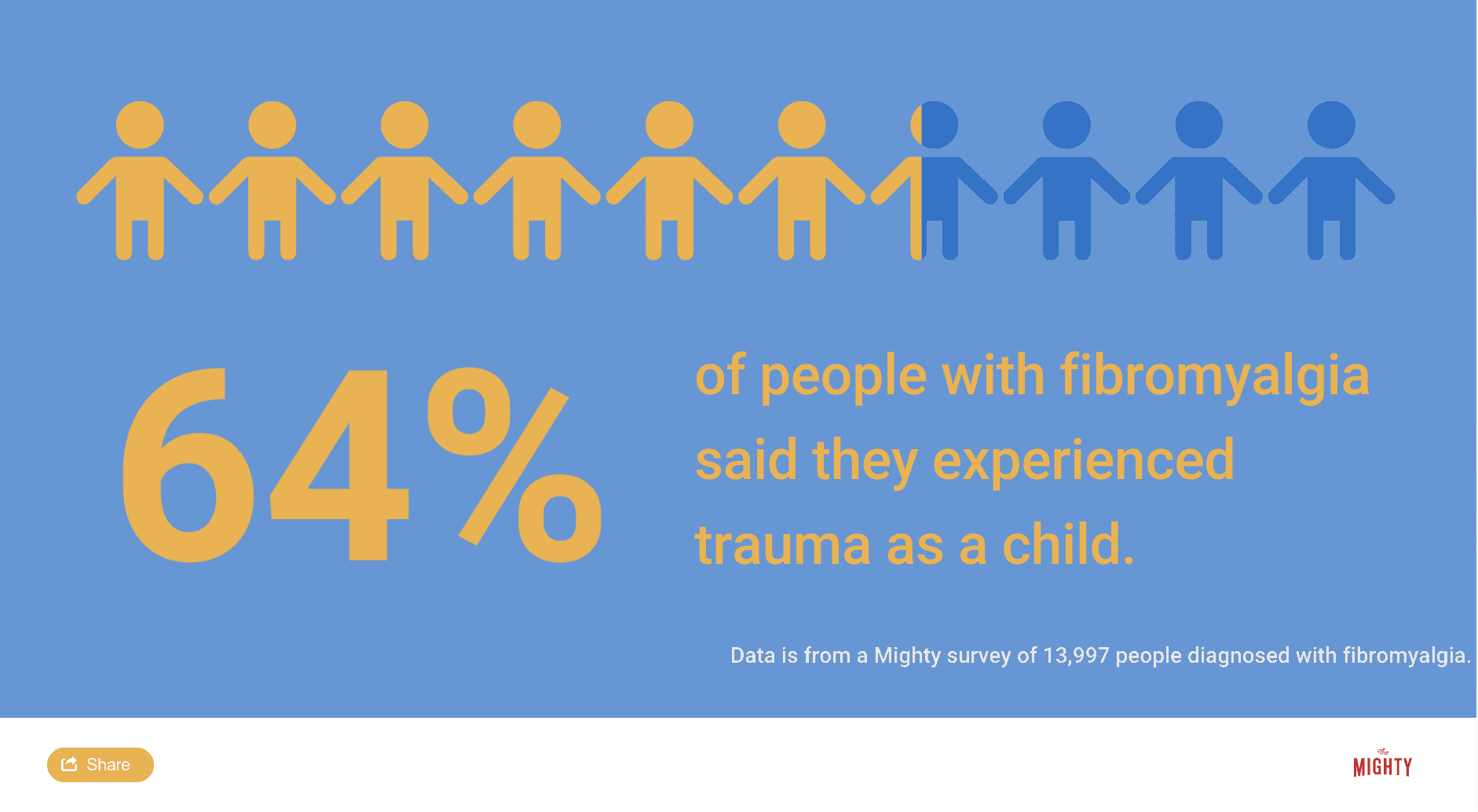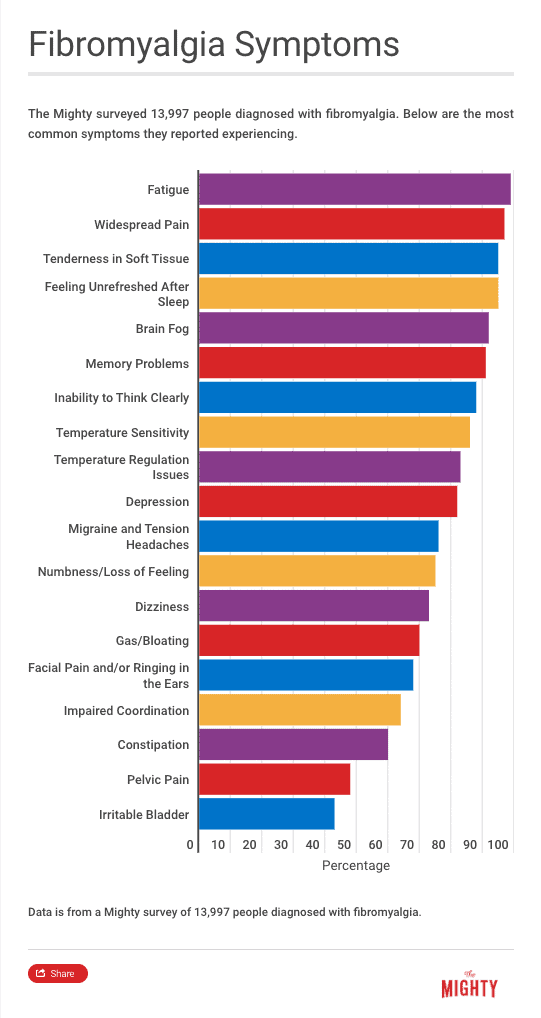It’s certainly getting better, but if you have a fibromyalgia diagnosis — or are advocating with your medical team to get one — you probably know it’s not the easiest condition to live with. Take experiencing fibromyalgia symptoms like chronic pain or fatigue that sometimes make even the most basic daily tasks a struggle or dealing with the stigma fibromyalgia is “all in your head,” for example.
- What is Fibromyalgia?
- What Are Common Fibromyalgia Symptoms?
Because you’re living with fibromyalgia, you probably know the ins and outs of what it’s like better than most. But how well do you really know the condition? We put together a 10-question true or false/myth or fact quiz to see just how deep your fibro knowledge runs. And, just maybe, you’ll learn some new tidbits to help you on your chronic illness journey.
Test your fibromyalgia knowledge and see if you can get a perfect score on this myth or fact fibro quiz! (Answers and explanations below.)
1. Myth or fact? Fibromyalgia is believed to be the most common chronic pain condition.
FACT: It’s estimated 3 to 6% of the U.S. population lives with fibromyalgia and experts believe it is the most common chronic pain condition. People of all genders can get fibromyalgia, but it is twice as common in women compared to men. It’s unclear why women are more likely to have the diagnosis, but some research suggests it’s due to differences in female versus male nervous system structures.
Learn more: Who Gets Fibromyalgia?
2. Myth or fact? Fibromyalgia is a type of autoimmune disorder, where your immune system attacks healthy tissues in your body.
MYTH: Fibromyalgia is not an autoimmune disorder, though early on when experts had no idea what it was, they thought it could be. The subject needs more research, but the current accepted explanation for fibromyalgia is it’s a disorder that causes the fight-or-flight function in your nervous system to go into overdrive. When your system gets stuck in an activated mode, it can lead to fibro’s hallmark symptoms: chronic pain, fatigue and trouble thinking, processing and remembering information.
Learn more: What Is Fibromyalgia?
3. Myth or fact? Fibromyalgia is almost always caused by trauma, like abuse or a bad car accident.
MYTH: You may have heard a lot about the connection between trauma and fibromyalgia, and not all of that info is helpful. Here’s the truth. Trauma alone does not cause fibromyalgia, though there is definitely a relationship. It’s believed you can inherit a risk of fibromyalgia from your family, but you won’t get the condition unless it’s triggered. For many people with fibro — 64% of those who took The Mighty’s fibromyalgia survey — trauma like child abuse, a car accident, military combat or violence can be that trigger.

Learn more: Where Does Fibromyalgia Come From?
4. Myth or fact? If you have fibromyalgia, you may experience symptoms like dry mouth, dizziness and a loss of coordination.
FACT: The three hallmark symptoms of fibromyalgia include chronic pain, fatigue and cognitive issues, like trouble processing or remembering information. But that’s not all. According to a survey of nearly 14,000 people in The Mighty’s fibromyalgia community, you may also experience symptoms that fall into a category called somatic dysfunction. These symptoms, like dry mouth, dizziness, a loss of coordination, hair loss, insomnia and painful intercourse, can also be generally attributed to the hyperactive nature of your nervous system.

Learn more: Somatic Symptoms of Fibromyalgia
5. Myth or fact? Only adults over the age of 18 can get fibromyalgia.
MYTH: Fibromyalgia is most commonly diagnosed in people who are in their 20s or 30s, though it can take much longer to get a diagnosis. As experts’ understanding of fibromyalgia grows, it’s likely the condition affects many people much younger, when they’re teenagers. Though not as recognized in children, adolescent-aged people are being diagnosed with fibromyalgia much more frequently know, which follows some research that shows triggers in adolescence can be tied to the onset of the condition.
Learn more: Fibromyalgia Symptoms in Children and Adolescents
6. Myth or fact? There are no tests doctors can use to help make a fibromyalgia diagnosis.
MYTH: This is a tricky one because it’s true there is no accepted test to diagnose fibromyalgia directly, but doctors can and do use a variety of other tests to help rule out other conditions. For example, your doctor may choose to do an MRI to make sure your pain and fatigue aren’t related to another condition like multiple sclerosis (MS) or a full blood workup to rule out hypothyroidism (an underactive thyroid) or an autoimmune condition. A few new blood tests, like the FM/a test and IsolateFibromyalgia, also show potential for being able to diagnose fibro with a simple, single blood test in the future.
Learn more: Fibromyalgia Blood and Lab Tests
7. Myth or fact? Only three prescription medications are officially FDA-approved for treating fibromyalgia symptoms.
FACT: Your doctor may prescribe a variety of medications to manage your fibromyalgia symptoms. Only three are officially approved by the U.S. Food and Drug Administration (FDA) to manage fibromyalgia symptoms, particularly chronic pain: duloxetine (brand name Cymbalta), pregabalin (brand name Lyrica) and milnacipran (brand name Savella). Other medications you may be prescribed to manage your symptoms include gabapentin (brand name Neurontin), other antidepressants, opioids for pain relief and muscle relaxers.
Learn more: Medication Treatments for Fibromyalgia
8. Myth or fact? Medication is considered the most effective treatment for fibromyalgia.
MYTH: Like most conditions, there isn’t a single treatment for fibromyalgia that works for all patients. In fact, when a treatment option works for up to 50% of patients, that’s considered pretty effective. This is certainly the case with exercise — exercise and mobility programs are currently the most effective fibromyalgia treatment option because they help approximately 50% of patients. It’s important to note, however, exercise will only be one aspect of how you manage your fibromyalgia. You’ll need a combination of treatment approaches, including exercise, medication and other therapies.
Learn more: Standard Treatment Options for Fibromyalgia
9. Myth or fact? Hypothyroidism (underactive thyroid) and Lyme disease are two conditions commonly confused with fibromyalgia.
FACT: Other chronic illnesses have several major symptoms in common with fibromyalgia, including chronic pain, fatigue and difficulty thinking or remembering information. This includes hypothyroidism, Lyme disease, myalgic encephalomyelitis (ME/CFS) or anemia, among others. Your doctor can rule out many of these other conditions with lab tests, but others, like ME/CFS, can’t be diagnosed with a single test. You’ll need to work with your doctor to make sure your diagnosis is accurate and reflects the best treatment plan for your condition.
Learn more: Conditions That May Be Mistaken For Fibromyalgia
10. Myth or fact? If you live with fibromyalgia, you’re not alone.
FACT: Living with a chronic illness like fibromyalgia can be isolating. Your loved ones may not understand what you’re going through and sometimes even your doctors may question your symptoms. But you’re not alone. There are many others out there living with fibromyalgia who know exactly what you’re going through, including right here on The Mighty! You can give and get support from other fibro warriors by following and posting on the site using the hashtag #Fibromyalgia.
Learn more: Fibromyalgia Resources
How did you do on the quiz? Let us know in the comments, and for more information about fibromyalgia, check out The Mighty’s Guide to Fibromyalgia here.

